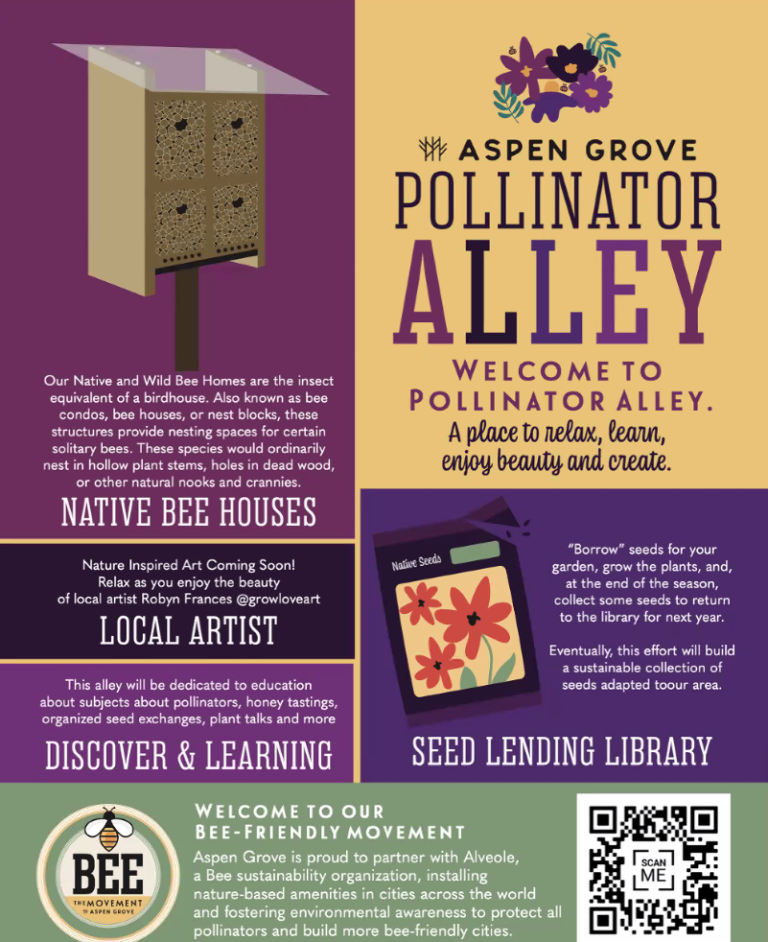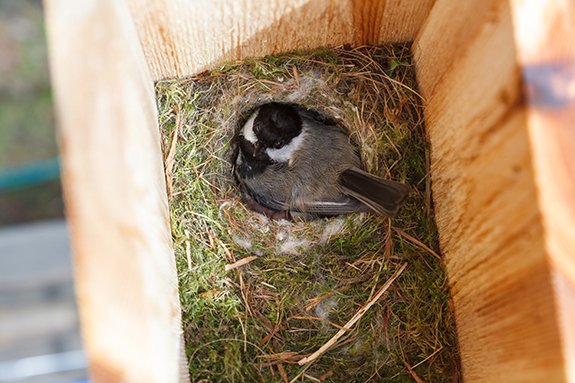Birdhouses are more than just decorations for your garden. They provide essential shelter for pollinator birds.
In this blog post, we will explore the key features that make a birdhouse perfect for these important creatures. Pollinator birds play a crucial role in our ecosystem. They help plants grow by spreading pollen. To support them, we need to offer safe and cozy homes.
A well-designed birdhouse can make a big difference. It can attract more birds and help them thrive. So, what features should you look for in a birdhouse? Let’s dive into the essential elements that every pollinator bird house needs. This guide will help you create an inviting space for our feathered friends.
Entrance Hole Size
Having the right entrance hole size in a pollinator bird house is vital. It determines which bird species can use the house. This feature can make a big difference in attracting the desired pollinators to your garden.
Ideal Dimensions
The ideal entrance hole size varies based on the bird species. Generally, a hole with a diameter of 1.5 inches works well. This size can accommodate many small birds. Here is a table with common dimensions:
| Bird Species | Entrance Hole Size (inches) |
|---|---|
| Wrens | 1.25 |
| Chickadees | 1.125 |
| Bluebirds | 1.5 |
| Sparrows | 1.75 |
Species-specific Needs
Different bird species have specific needs. Wrens prefer smaller holes, around 1.25 inches. Chickadees need even smaller holes, about 1.125 inches. Bluebirds require a hole size of 1.5 inches. Sparrows are comfortable with a hole size of 1.75 inches.
Using the correct entrance hole size will help ensure the right birds visit your bird house. This can enhance your garden’s ecosystem.
Proper Ventilation
Ensuring proper ventilation in a pollinator bird house is crucial for the health of its occupants. Good airflow helps regulate temperature and prevents moisture buildup. This keeps the birds comfortable and healthy. Let’s explore the benefits and best practices for ventilation in bird houses.
Ventilation Benefits
Ventilation offers numerous advantages. Here are some key benefits:
- Temperature Regulation: Proper airflow helps maintain a stable and comfortable temperature inside the bird house.
- Moisture Control: Prevents the buildup of condensation, reducing the risk of mold and mildew.
- Fresh Air: Ensures a continuous supply of fresh air, vital for the birds’ respiratory health.
Without ventilation, bird houses can become damp and stuffy. This creates an unhealthy environment for the birds.
Best Practices
Follow these best practices to ensure your bird house has proper ventilation:
- Include Ventilation Holes: Place small holes near the roof to allow hot air to escape.
- Use Breathable Materials: Choose materials that allow air to pass through, like wood.
- Avoid Sealing: Do not seal the house tightly. This ensures there’s always some airflow.
- Regular Checks: Inspect ventilation holes regularly to ensure they are not blocked.
Proper ventilation is a simple yet essential feature. It ensures a healthy living space for your feathered friends.
Safe Nesting Materials
Choosing the right materials for nesting is crucial. It ensures the safety and comfort of the birds. Using safe and natural nesting materials helps attract pollinators and supports their well-being.
Natural Options
Natural nesting materials are the best choice for a pollinator bird house. These materials mimic the birds’ natural environment. Here are some excellent options:
- Dry Grass: Birds love dry grass. It is soft and insulating.
- Moss: Moss provides a cozy and moisture-resistant lining.
- Leaves: Leaves offer a natural and breathable base for nests.
- Bark Strips: Bark strips are sturdy and create a firm structure.
- Feathers: Feathers add warmth and comfort.
Avoid Harmful Materials
Not all materials are safe for bird nests. Avoid using these harmful materials:
- Synthetic Fibers: These can cause tangling and injury.
- Plastic: Plastic can lead to choking and entanglement.
- Chemically Treated Materials: Chemicals can be toxic to birds.
- Sharp Objects: Sharp objects can injure the birds.
Using safe nesting materials in your pollinator bird house is essential. It ensures the birds are protected and comfortable. Choose natural options and avoid harmful materials. This helps create a safe and inviting environment for pollinators.
Secure Mounting
Ensuring your pollinator bird house has a secure mounting is vital. It keeps the house stable and safe from predators. Birds need a safe place to nest, and without proper mounting, their house can fall or sway. This section covers the importance of stability and various mounting techniques to keep your bird house secure.
Stability Importance
Stability is crucial for a bird house. A stable bird house provides a safe environment for birds to nest and raise their young. It prevents the house from swaying in the wind. A swaying house can scare birds away. It also keeps predators from easily accessing the nest.
Furthermore, a stable mount ensures that the bird house remains in place throughout the seasons. It withstands various weather conditions, from strong winds to heavy rain. Stability helps in reducing the risk of the house falling or breaking, which can harm the birds and their eggs.
Mounting Techniques
There are several mounting techniques to ensure your bird house is secure:
- Pole Mounting: Attach the bird house to a sturdy pole. Use metal poles as they are more resistant to predators.
- Wall Mounting: Secure the bird house to a wall or fence. This provides extra stability and protection.
- Tree Mounting: Mount the bird house on a tree using strong brackets. Ensure the tree is healthy and sturdy.
Each method has its pros and cons. Choose the one that best fits your environment. Make sure the mounting height is appropriate. A height of 5-10 feet is ideal. This height keeps the house safe from ground predators.
Additionally, check the mounts regularly. Ensure they remain tight and secure. Regular maintenance prolongs the life of your bird house and keeps it safe for the birds.
Easy Cleaning Access
One of the most crucial aspects of a pollinator bird house is easy cleaning access. Regular cleaning ensures the health and safety of the birds. It also helps to maintain the longevity of the bird house. A well-designed bird house allows for quick and hassle-free cleaning, making it a preferred choice for bird enthusiasts.
Cleaning Frequency
Maintaining a clean bird house is essential for the well-being of its inhabitants. A general rule of thumb is to clean the bird house at least twice a year. This helps to prevent the build-up of waste, parasites, and other harmful elements. During the breeding season, more frequent cleanings may be necessary.
| Season | Cleaning Frequency |
|---|---|
| Spring | Before nesting begins |
| Summer | After each brood |
| Fall | Once nesting is complete |
| Winter | Before birds return |
Design For Easy Access
A well-designed bird house should have features that allow for easy access during cleaning. This can include a removable roof, a sliding panel, or a hinged door. These elements make it simple to reach inside the bird house and remove any debris or old nesting materials.
Consider the following design elements:
- Removable Roof: Allows for complete access to the interior.
- Sliding Panel: Offers a quick way to clean without disturbing the structure.
- Hinged Door: Provides easy entry and exit points for thorough cleaning.
Incorporating these design elements ensures that the bird house remains clean and safe for its occupants. It also makes the maintenance process easier for the bird house owner. Regular cleaning and a thoughtful design contribute to a healthy environment for pollinator birds.
Weather Protection
Weather protection is crucial for any pollinator bird house. Without it, your bird house will not last long. Birds need a safe and dry place to nest. This section covers the key aspects of weather protection. Let’s dive into the materials and roof design.
Weatherproof Materials
The materials used in your bird house must withstand harsh weather. Opt for wood that is rot-resistant. Cedar and redwood are excellent choices. They repel water and resist decay. Avoid using treated wood. It can be harmful to birds. Metal parts should be rust-resistant. Stainless steel and brass are good options. They ensure longevity and safety.
Roof Design
The roof design is a critical aspect of weather protection. A sloped roof allows rain to run off easily. This prevents water from pooling. Overhanging roofs offer extra protection. They shield the entrance from rain and sun. Ensure the roof is securely attached. Strong winds should not blow it off. Removable roofs provide easy access for cleaning.
Predator Guards
Predator guards are vital for protecting pollinator bird houses. These guards prevent predators from harming the birds. They create a safe environment for nesting birds.
Types Of Guards
Several types of predator guards exist. One common type is the stovepipe guard. It is a cylinder placed around the bird house pole. Another type is the cone guard. It has a cone shape and fits under the bird house. Lastly, there’s the entrance hole guard. It is a small metal ring that fits around the entrance hole.
Installation Tips
Installing predator guards is simple. For stovepipe guards, slide the cylinder over the pole. Secure it with screws or clamps. Cone guards need to be attached beneath the bird house. Ensure the cone is wide enough to block predators. Entrance hole guards should fit snugly around the hole. Use screws to secure them in place. Regularly check the guards for damage. Replace any broken or worn guards promptly.
Proper Placement
Proper placement ensures pollinator bird houses provide safe, accessible homes. Position them in quiet, shaded areas for optimal bird attraction.
Choosing the right spot for your pollinator bird house is vital. Birds need safe and accessible locations. Proper placement ensures the house is inviting. It also helps birds feel secure.Ideal Locations
Place the bird house in a quiet area. Avoid busy or noisy locations. Gardens or backyards with flowers are perfect. Birds will find food and shelter there. Keep the house away from predators. Cats and other animals can scare birds.Height And Orientation
Mount the bird house at the correct height. Around 5 to 10 feet is best. This height keeps birds safe from ground predators. Also, consider the orientation. The entrance should face away from the wind. This keeps the house warm and dry. Birds prefer a stable environment for their nests. “`Frequently Asked Questions
What Materials Are Best For Birdhouses?
Natural, untreated wood is best for birdhouses. Cedar and pine are popular choices. They offer insulation and durability. Avoid using pressure-treated wood or metal. These materials can harm birds.
How Should Birdhouses Be Ventilated?
Proper ventilation is crucial for birdhouses. Small holes near the top allow air to circulate. This helps maintain a healthy environment. Ensure the birdhouse has drainage holes too. They prevent water accumulation.
What Size Should The Entrance Hole Be?
The entrance hole size depends on the bird species. For small birds, a 1. 5-inch hole is ideal. This size keeps predators out. Always research the specific bird’s requirements.
How To Protect Birdhouses From Predators?
Install predator guards around the entrance hole. Use a metal plate or baffle. Position the birdhouse on a pole or post. Avoid placing it near branches or fences. This deters climbing predators.
Conclusion
Creating the perfect pollinator bird house is crucial for your garden. Focus on ventilation, safe materials, and proper placement. Ensure enough space for the birds to thrive. A cleanable design helps maintain a healthy environment. Consistent food and water sources attract more pollinators.
Remember, a well-designed bird house supports both birds and your garden’s health. Happy bird watching!


